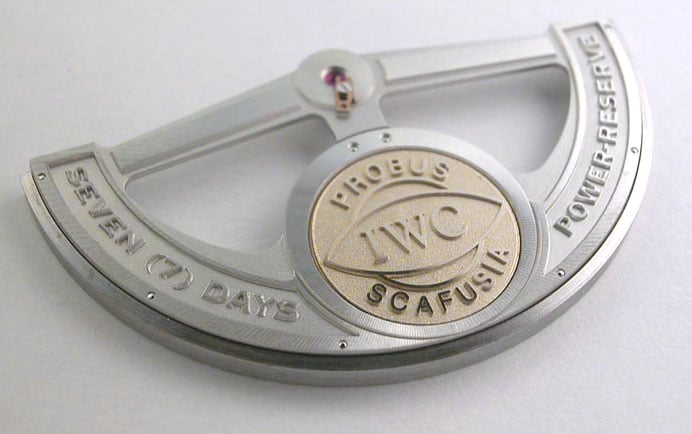The rotor, a catalyst to the modern wristwatch, is a self-winding mechanism that was invented by Swiss watchmaker, Abraham-Louis Perrelet around 1770. Originally, the rotor self-winding mechanism was used predominantly in pocket watches, which when first invented, had to be wound for upwards of 15 minutes in order to operate for eight days as the watch’s only source of energy. Eventually, automatic winding was introduced in mechanical watches, which could subsequently store up to two days of reserve energy from manual winding in addition to its automatic functioning power.

From a functional standpoint, the rotor, works to power a mechanical watch’s spiral mainspring. This then activates the internal gears, which in turn move the hands of the watch. Like a manually wound watch, the spring in an automatic watch eventually loses energy without winding. The watch then requires manual winding or it will cease to work. This issue was solved by the introduction of the quartz watch, which many people found to sacrifice artistry for accuracy and functionality.
The rotor is, in many ways, key to the modern watch’s functioning. The peak in popularity for automatic mechanical watches came in the 1960s as they became more widely adopted. Up to that point, the main obstacle to such development was the weight and size of a standard rotor, which was eventually squeezed into the inner workings of wristwatches.
Consequently, this is why most modern watches are much thicker than pocket watches. With this said, modern watchmakers have still managed to maintain the classic, relative size of most mechanical watches albeit with a bit more girth to them. This, of course, is not to forget the popularity of the rotor’s quartz counterpart, which ultimately overshadowed mechanical watches in the 1970s and 1980s. However, while quartz may offer a more efficient and accurate watch, there is little artistry to be found away from the rotor of a mechanical watch.
The rotor of and its fellow mechanical workings have recently made a comeback, as more watch owners are using, and subsequently paying homage to the classic beauty and elegance of mechanical watches.